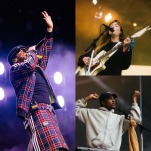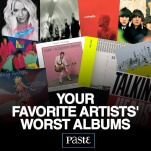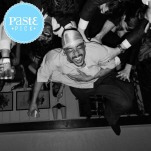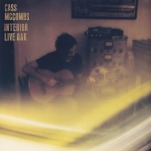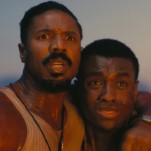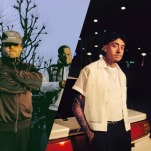All Wrapped Up: How 2014 Birthed the Wave of Spotify-Core Music
Even as it broadened our horizons and foresaw every major trend of the decade to come, 2014 also predicted the increased focus on corporate synergy and what plays well on playlists.
Photos by Suzi Pratt/FilmMagic, Kevin Mazur/WireImage & Michael Tullberg/Getty Images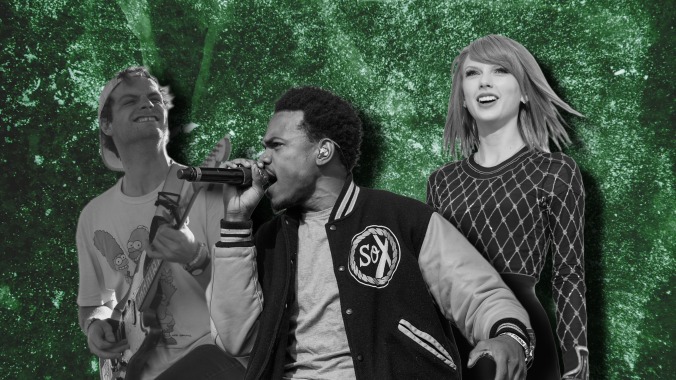
I turned 20 in the summer of 2014. I only mention this to note that this means that I, like many others at that time, was pathologically obsessed with “being cool”: How to become it? How to achieve it? What music should I listen to such that I was undeniably, categorically it? In generations past, this would have meant seeking out your coolest friend and asking them to put together a mixtape for you, or even checking out their iPod Nano (lime green if they were cool) to see what tracks they had on it. But with cassettes, CDs and even iTunes starting to become relics, the move then was to put together a Spotify playlist. And there was no better year for “Spotify-core” music than 2014.
Run The Jewels. Freddie Gibbs. Mac DeMarco. St. Vincent. Perfume Genius. Angel Olsen. FKA Twigs. Alvvays. Dean Blunt. Flying Lotus. Parquet Courts. Protomartyr. All of these artists released albums in 2014. The year was genre-spanning, vibe-cultivating, and crucially, just hazy and fluctuating enough to fit snugly into a slot on the playlists that would come to define your 20s—the decade in which you are most concerned with emanating a nonchalant, hazy, constantly-fluctuating atmosphere of cool. 2014 was the peak for the artists that came to filter through Lorem, License to Chill, The New Alt and other algorithmically-generated playlists that exposed a generation of late millennials to the music that would come to define them. These were the lofi beats you could study to, the soundtracks to “Netflix and Chill,” the background music to days spent on a smoke break (technically 2013, but spiritually 2014) or as a sunbathing animal.
2014 was the tipping point for one of the most important changes in the music industry: consumers going from discovering new music (whether through friends or zines or pure accident) to being recommended new music. These artists perfectly crested the wave of “Spotify-core” music—music fluid enough that songs could exist comfortably on many playlists all at once, with just enough touches from disparate genres to pass as moody or dark or romantic or chill as needed.
That’s not to say that these albums are all mediocre—I love a lot of the artists listed above. But they all share a certain musical tailoring to the millennial generation. A good portion of gigs I’ve seen live were by artists who put out music in 2014; some of them (Parquet Courts, Protomartyr) I’ve seen multiple times. And I can’t pretend to sit here and say that this was because I’m an inherently cool person (I’m not.) The more likely culprit is that, at some point, these artists filtered through a Spotify playlist I was looking at, and from there they became pieces of the fabric of my young adulthood. I’m sure their music wedged itself into a similar headspace as other people my age who were similarly being dictated to by an algorithm that knew exactly how to target a desire to be indie but relatable, to be able to hang but not in a needy way, to be fun but not flaky. “Spotify-core” music soundtracked the development of a young, urbane lifestyle.
-

-

-

-

-

-

-

-

-

-

-

-

-

-

-

-

-

-

-

-

-

-

-

-

-

-

-

-

-

-

-

-

-

-

-

-

-

-

-

-

